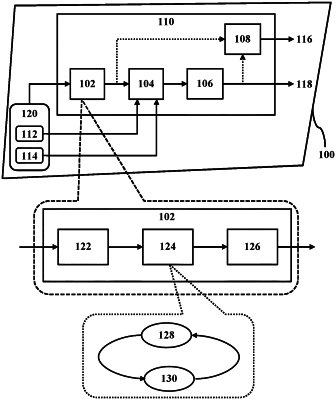| CPC A63B 24/0006 (2013.01) [A63B 2220/40 (2013.01); A63B 2220/836 (2013.01); A63B 2244/20 (2013.01)] | 7 Claims |

|
1. A wearable device comprising:
at least one motion sensor including a multi-axis gyroscope or a multi-axis accelerometer; and
a controller operably connected to the at least one motion sensor and configured to determine swim characteristics of a swimmer, the controller configured to:
detect input signals from the at least one motion sensor,
perform stroke segmentations based on at least one of the detected input signals using a stroke segmentation module,
extract feature vectors through a feature extraction module from the detected input signals based on the stroke segmentations, and
determine the swim characteristics using the extracted feature vectors through a classifier module,
wherein the stroke segmentation module is configured to:
process at least one dominant axis signal from the detected input signals through a filter module and output a filtered signal;
generate an envelope signal from the filtered signal based on state machine conditions by:
following the filtered signal by default;
falling at a predefined rate when a value of the filtered signal is decreasing, referenced as a fall state, and
following the filtered signal when the value of the filtered signal increases and exceeds a value of the envelope signal in the fall state, referenced as a follow state, and
detect a stroke segment based on an occurrence of any one of two of the follow states and the fall states.
|